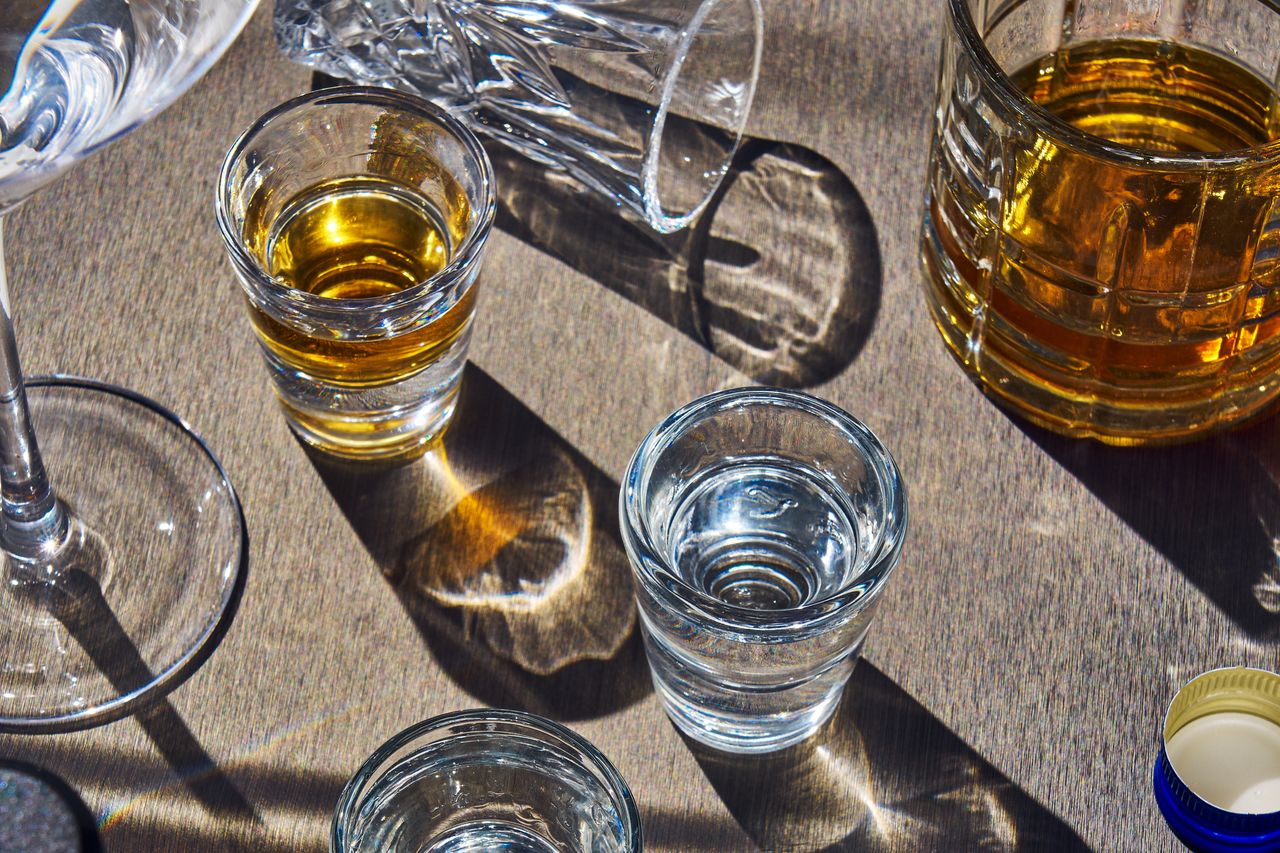
HOW MUCH ALCOHOL CAN YOU DRINK A WEEK AND STILL BE HEALTHY?
How much drinking is bad for you?
Though more people are calling themselves sober-curious or are trying zero-proof replacements for alcohol, drinking is a regular part of social life for most of us. A coupe of champagne can add fun to a celebration. A cocktail can take the edge off a tough day. And a cold beer can liven up a sports game.
Yet scientists’ warnings about the potential health problems of even small amounts of alcohol are growing more dire. For moderate drinkers, it can be hard to know what’s actually OK to consume: Is two a day that much worse than one? Are two drinks over a week the same as two in a day?
Averaging no more than about one drink a day is relatively low risk, according to scientists who study alcohol. They warn the risk of cancer rises significantly when you exceed that. Studies have suggested that alcohol contributes to about half a dozen types of cancers, including breast and colorectal, as well as heart and liver disease, among other conditions.
The only way to completely avoid related health problems is to stop drinking alcohol. Plenty of people do cut it out entirely, but for many others, that’s a nonstarter.
A U.S. federal dietary committee is currently evaluating alcohol consumption guidelines, which recommend that men consume no more than two drinks a day and, for women, no more than one. In 2020 a federal committee proposed lowering the recommendations for men in line with the women’s guideline, but it wasn’t ultimately adopted.
Newer guidelines from others suggest being even more conservative than that. After assessing a wide range of studies, an influential group of Canadian researchers last year looked at how the risk of dying from anything alcohol-related—including cancer, heart disease and accidents—changes depending on how heavily people drink. They deemed the risks with two drinks or less a week to be low; three to six drinks as moderate; and seven or more “increasingly high.”
“At seven standard drinks per week [the risk] goes up much steeper, rises exponentially,” says Dr. Peter Butt, a clinical associate professor at the University of Saskatchewan and co-chair of the committee that developed the Canada group’s 2023 guidance on alcohol and health.
Canada and the U.S. define a standard drink as 12 ounces of beer, 5 ounces of wine, or 1.5 ounces of spirits, which are equivalent to typical servings.
When it comes to things you can do to lower your individual risk of developing cancer, cutting alcohol is high on the list. A new study in the American Cancer Society’s journal looked at so-called modifiable cancer risks, or ones that you can influence through behavior changes. It found that alcohol is the third strongest risk factor for women, behind cigarettes and excess body weight. It was the fourth strongest for men, after cigarettes, UV radiation and excess weight.
The study, which analyzed data from 2019, found that alcohol consumption resulted in about 24,400 cancer deaths and nearly 97,000 cases in the U.S. About 13% of colorectal cancer cases were linked to alcohol intake as were 16% of female breast-cancer cases.
How alcohol affects your body
Drinking can damage your body in a few different ways. When you metabolize alcohol, your body breaks it down to acetaldehyde, a toxic chemical that can damage DNA and proteins. Alcohol also generates chemically reactive molecules containing oxygen, which can damage proteins, fats and DNA. And it can raise levels of the hormone estrogen, which is linked to breast cancer.
About 16,800 deaths could be prevented a year if adults who drink more than the U.S. recommendations reduced their alcohol consumption, according to an April study from Centers for Disease Control and Prevention researchers in the American Journal of Preventive Medicine. About 650 deaths could be prevented if men drank one drink a day instead of two.
Especially dangerous is binge drinking, typically defined as drinking four to five-plus drinks in one sitting. In addition to injuries and accidents associated with drunkenness, heavy drinking increases your likelihood of developing Type 2 diabetes, studies have found.
“There are a lot of conditions where the main health concerns are at those binge levels,” says William Kerr, a senior scientist and scientific director of the nonprofit Public Health Institute’s Alcohol Research Group. Inflammation and other damaging biological processes may be triggered by processing high amounts of alcohol.
His research has also found differences between beverages. Hard liquor is more harmful than beer or wine, especially when it’s drunk straight, he says.
Differences between women and men
The dangers of drinking too much loom especially large for women, who have lower levels of an enzyme that breaks down alcohol. Their bodies also contain less water and more fat, and they weigh less than men on average.
“Women are more vulnerable to the range of health harms above six drinks per week,” says Dr. Tim Stockwell, a scientist with the Canadian Institute for Substance Use Research who worked on the latest alcohol guidelines developed in Canada, the U.K. and Australia.
Most of the greater risk for heavier-drinking women is driven by breast cancer, says Nigel Brockton, vice president of research at the American Institute for Cancer Research. The other cancers linked to alcohol consumption are more common in males.
If you’re hitting happy hour after work today, there are a few strategies to try to stay healthier. One approach is to alternate an alcoholic drink with a nonalcoholic one. This will slow your alcoholic intake and make you feel full, prompting you to drink less, says Butt.
Don’t drink too fast. Spacing out your drinks can slow down your intake and lessen their impact. And avoid drinking on an empty stomach—eat before and while you drink to slow the absorption of alcohol.
Write to Sumathi Reddy at [email protected]
2024-07-17T09:43:30Z dg43tfdfdgfd